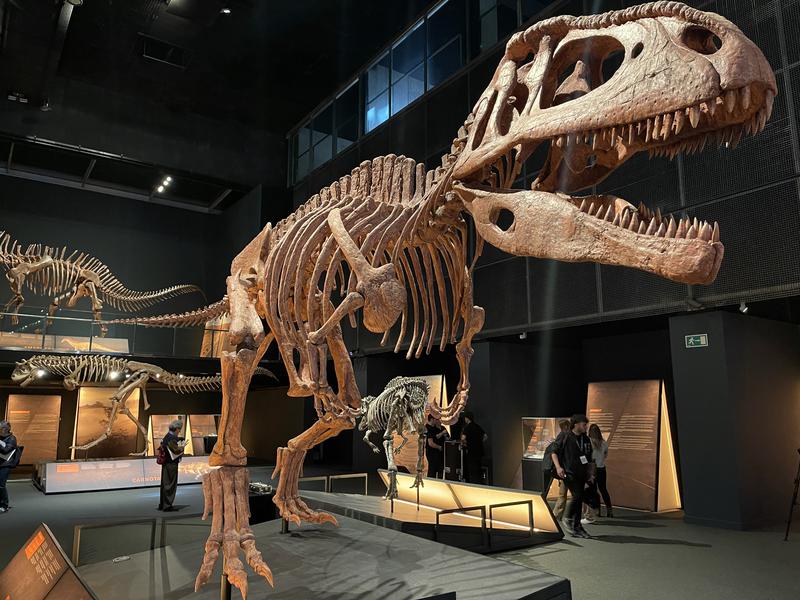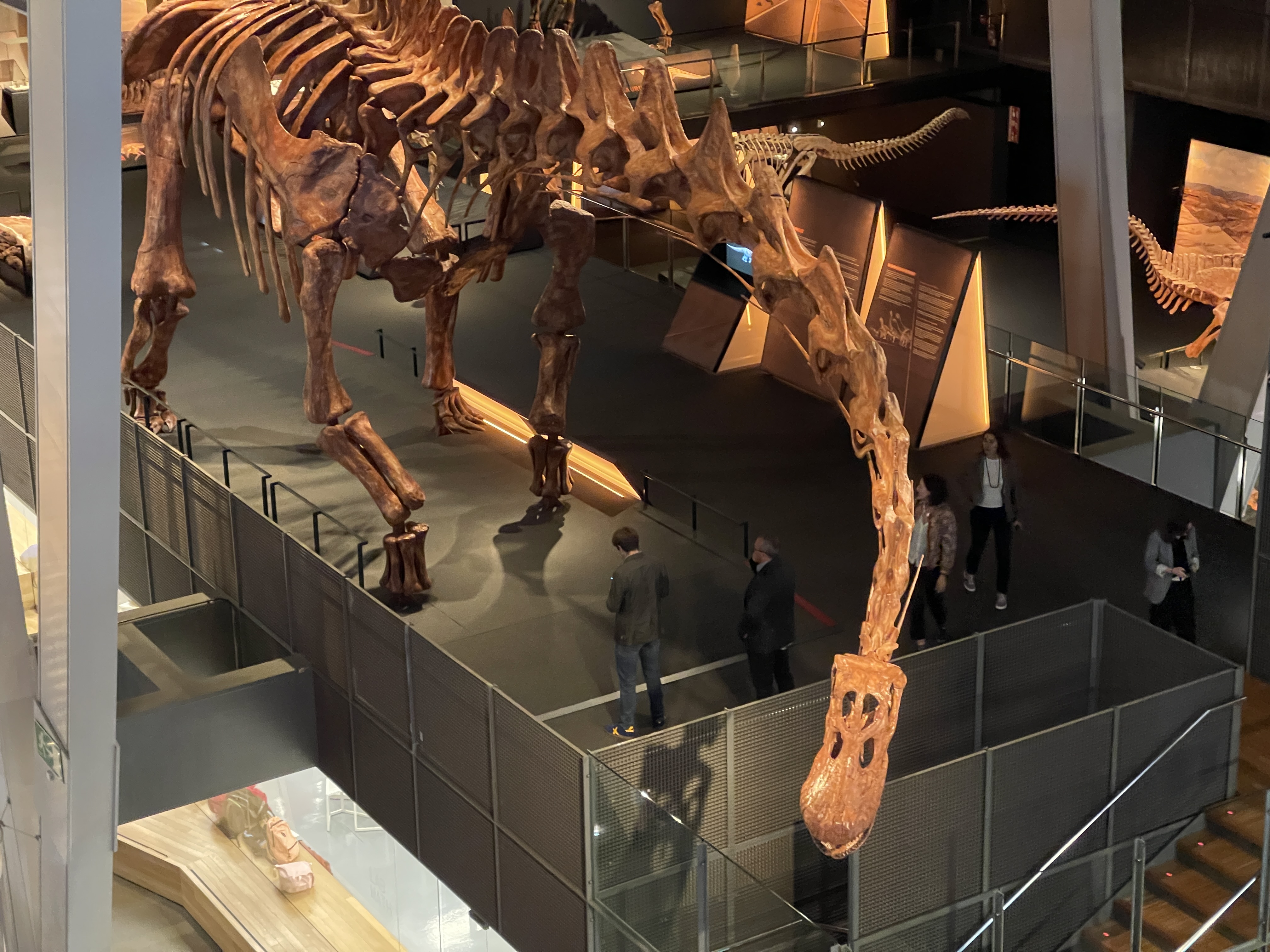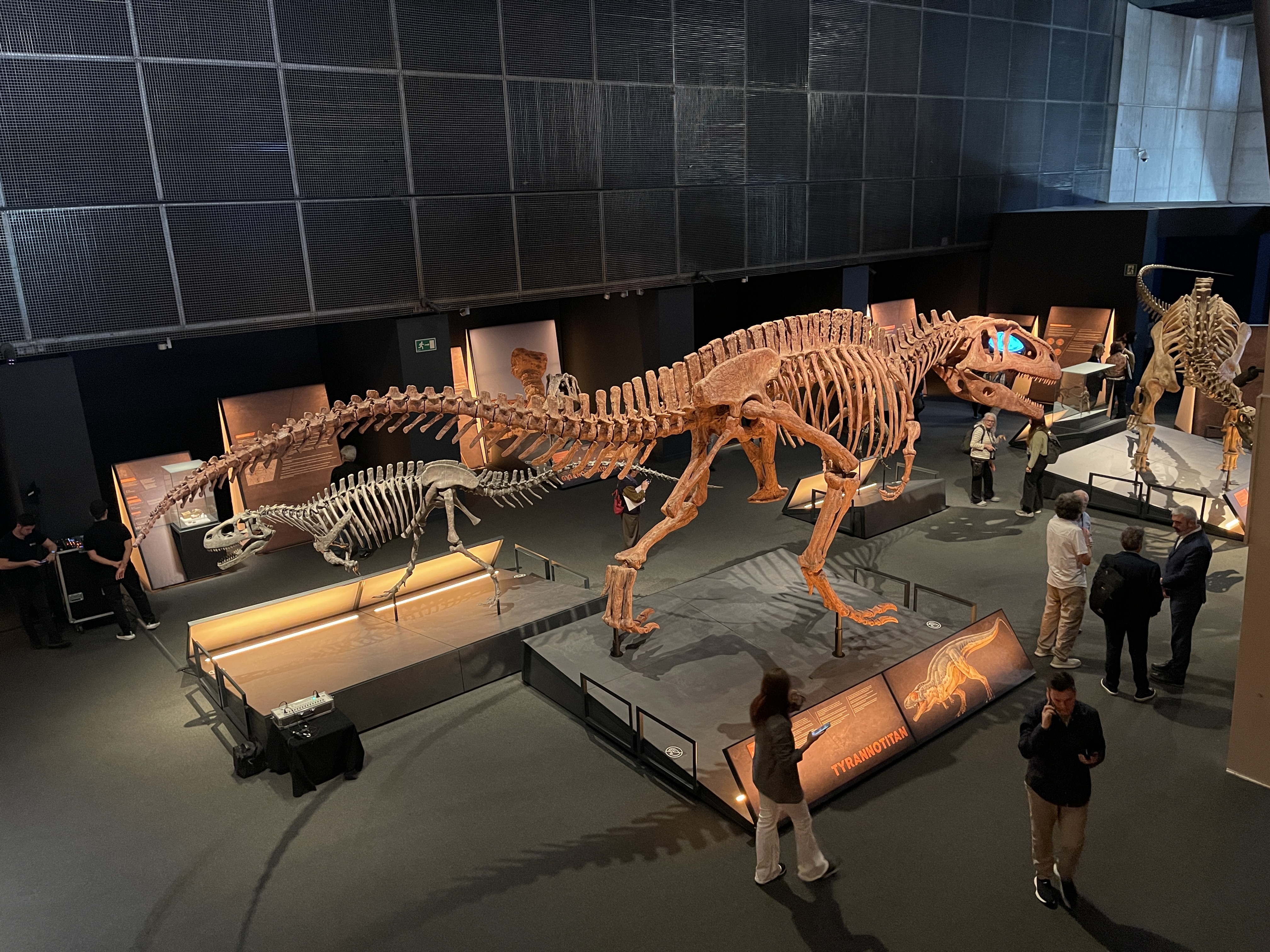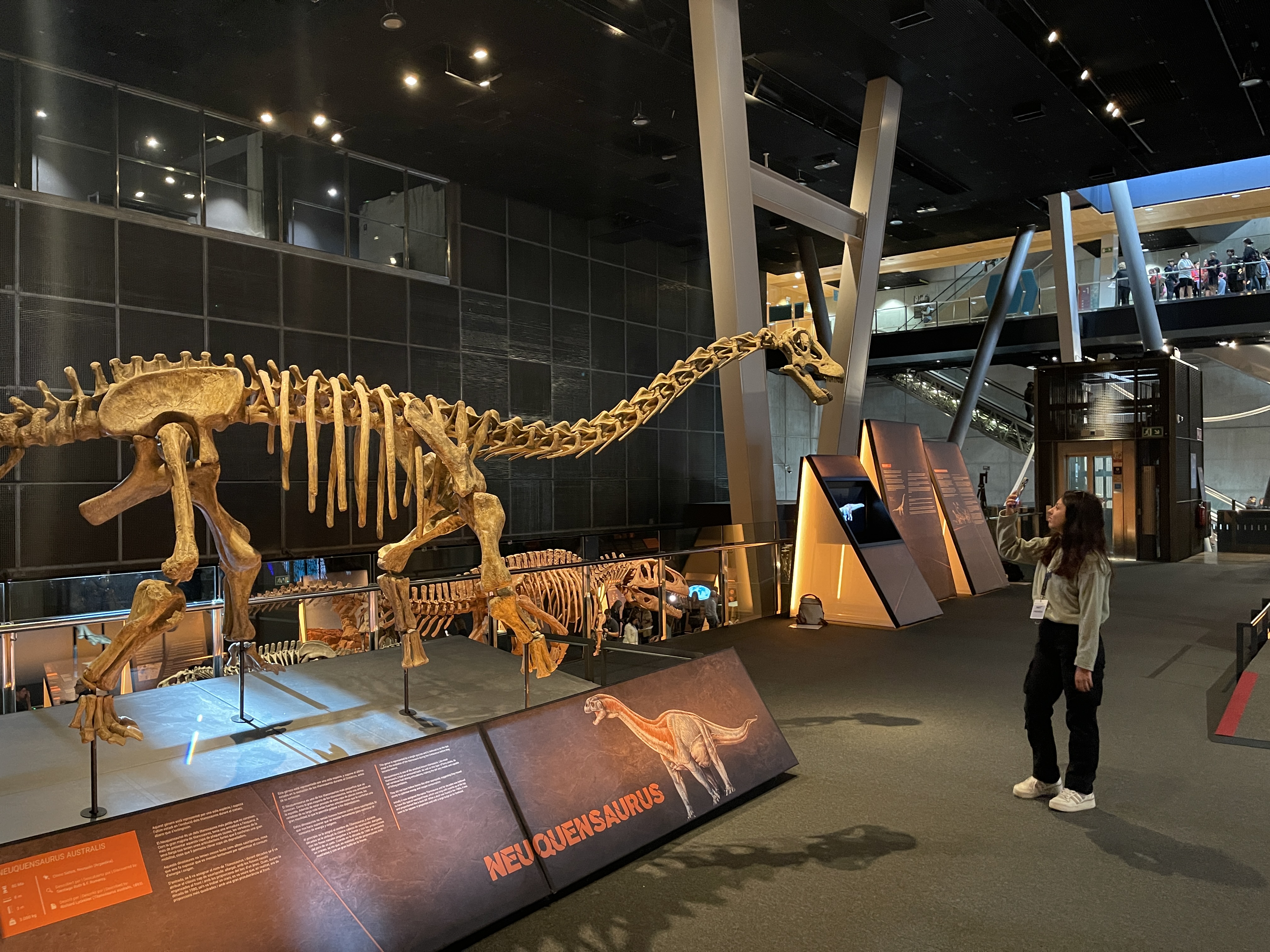'Dinosaurs of Patagonia' descend on Barcelona's CosmoCaixa science museum
Exhibition featuring actual-size fossil replicas up to 38 meters long runs from October 26 until June 2

From the gigantic 38-meter-long Patagotitan mayorum to the diminutive Manidens condorensis weighing just 1kg, dinosaurs from Patagonia have descended on Barcelona's CosmoCaixa science museum.
Running from October 26 until June 2, 2024, 'Dinosaurs of Patagonia' is a journey back in time from the Mesozoic Era to modern-day Patagonia in South America.
For the first time in Europe, visitors will be able to see this exhibition developed by the Egidio Feruglio Paleontological Museum (MEF) in Trelew, Argentina, which features 13 dinosaur specimens – replicas based on fossils discovered in Patagonia.
The star of the show is the 38-meter-long reproduction of the Patagotitan mayorum, the largest dinosaur known. Visitors will be able to walk between the dinosaur's legs and imagine what it would have been like to witness this giant reptile up close, one that could weigh up to 77 tonnes, equal to 14 African elephants.

The remains of this titanosaur were found just 11 years ago in the Argentine province of Chubut, one of the most significant paleontological discoveries made in Patagonia this century.
The exhibition also contains a real fossil of the Patagotitan's femur, more than 2 meters long and weighing almost 600kg.
Exhibition organizers highlight the diversity of specimens on display: carnivores, herbivores, animals big and small, with or without feathers. The scariest, however, is the Tyrannotitan chubutensis.
Sure to be a hit with visitors young and old, it lived around 120 million years ago and preyed on the giant Patagotitan mayorum. That says a lot about how firce it was.

"People can see the complete history of dinosaurs in this exhibition," José Luis Carballido, a palaeontologist at MEF told Catalan News.
"They will see the first dinosaurs that appear in the fossil record 230 million years ago, up to the to the end of the dinosaur era 65 million years ago, and in the middle they will see one of the largest animals that ever walked on the planet, Patagotitan."
The Patagotitan mayorum will make a permanent return to the Barcelona museum when the exhibition's tour ends in three years, as was announced at a press conference this Wednesday with Carballido, Elisa Durán, Deputy General Director of ”la Caixa” Foundation, and Valentí Farràs, Director of the CosmoCaixa science museum.
Why Patagonia?
The dinosaurs found in Patagonia show a remarkable diversity of characteristics, which scientists have discovered thanks to the numerous remains preserved in the sedimentary rocks there.
At the beginning of the Mesozoic era, the planet's continents were united in a single land mass called Pangea, with Patagonia attached to Africa. The passing of time and movement of tectonic plates turned the wooded, swampy land where the dinosaurs lived into an arid landscape where the best conserved remains in the southern hemisphere can be found.
In the exhibition, visitors can see specimens that belonged to the three periods of the Mesozoic era: Triassic, Jurassic and Cretaceous.

The dig
Through videos, musem-goers will also be able to see the environment where the remains of the Patagotitan were found and how the excavation was carried out.
The dig lasted three years, followed by two more years of laboratory work involving a team of more than 100 professionals from various disciplines.
Carballido, who was part of the discovery of Patagotitan, said it was "amazing" when they realized they were looking at one of the largest animals to roam the Earth. At the same time, the task ahead seemed daunting.
After "a lot of work and dealing with every kind of problem regarding how to excavate such a big animal, it was," he says, "worth it in the end."